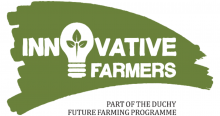Six farmers across the east of England have been investigating how farmers can better harness the power of flowers to fight pests, by attracting predatory insects; and attracting them where they are most needed. Participating in an Innovative Farmers field lab, these farmers -who operate both conventional and organic systems- hope to unlock more knowledge about how to attract and support the right insect populations by looking at the impact of flower establishment techniques, flower species mixes, and distribution of flowering features on farm.







